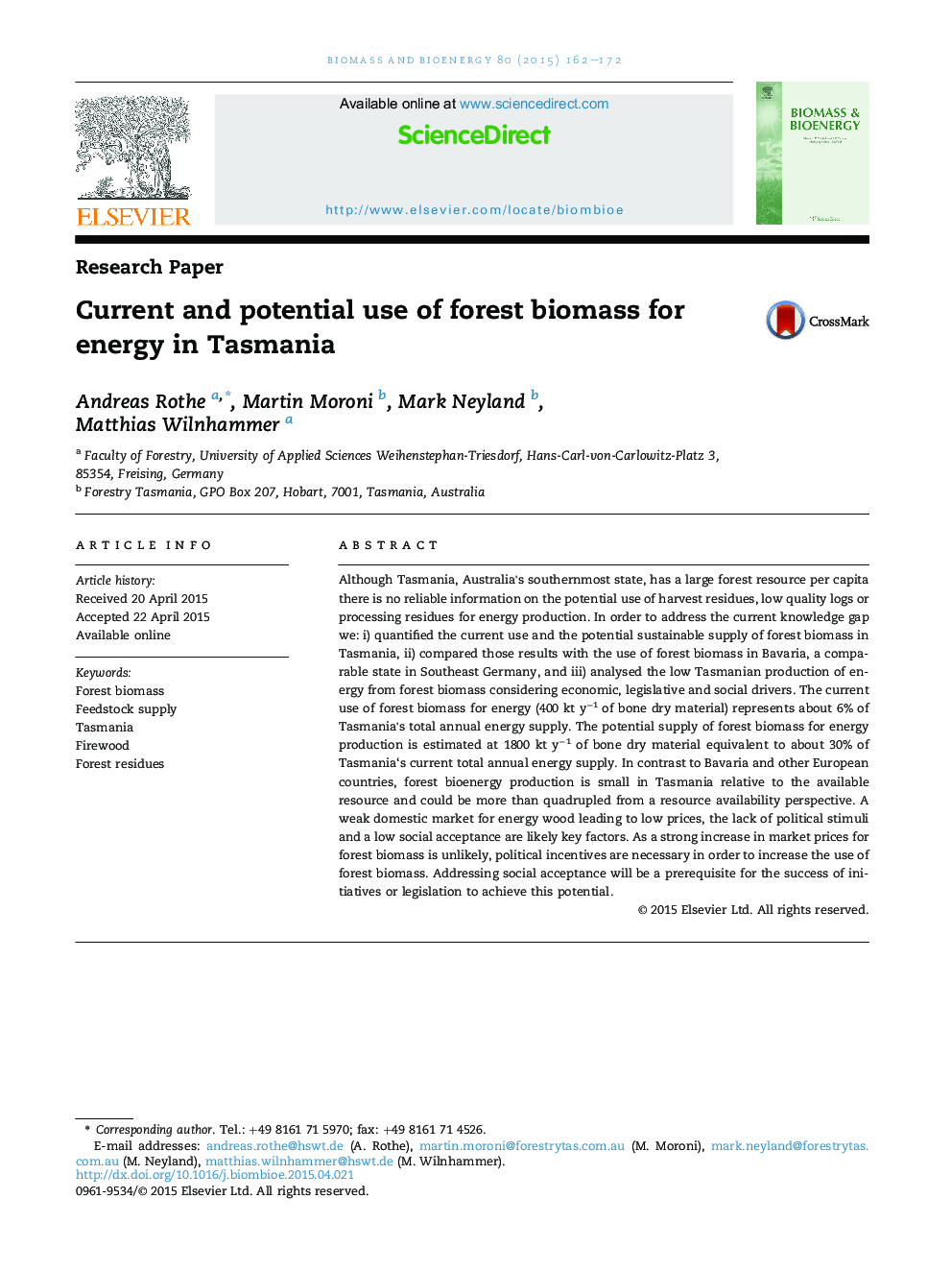| Article ID | Journal | Published Year | Pages | File Type |
|---|---|---|---|---|
| 7063832 | Biomass and Bioenergy | 2015 | 11 Pages |
Abstract
Although Tasmania, Australia's southernmost state, has a large forest resource per capita there is no reliable information on the potential use of harvest residues, low quality logs or processing residues for energy production. In order to address the current knowledge gap we: i) quantified the current use and the potential sustainable supply of forest biomass in Tasmania, ii) compared those results with the use of forest biomass in Bavaria, a comparable state in Southeast Germany, and iii) analysed the low Tasmanian production of energy from forest biomass considering economic, legislative and social drivers. The current use of forest biomass for energy (400 kt yâ1 of bone dry material) represents about 6% of Tasmania's total annual energy supply. The potential supply of forest biomass for energy production is estimated at 1800 kt yâ1 of bone dry material equivalent to about 30% of Tasmania's current total annual energy supply. In contrast to Bavaria and other European countries, forest bioenergy production is small in Tasmania relative to the available resource and could be more than quadrupled from a resource availability perspective. A weak domestic market for energy wood leading to low prices, the lack of political stimuli and a low social acceptance are likely key factors. As a strong increase in market prices for forest biomass is unlikely, political incentives are necessary in order to increase the use of forest biomass. Addressing social acceptance will be a prerequisite for the success of initiatives or legislation to achieve this potential.
Related Topics
Physical Sciences and Engineering
Chemical Engineering
Process Chemistry and Technology
Authors
Andreas Rothe, Martin Moroni, Mark Neyland, Matthias Wilnhammer,
